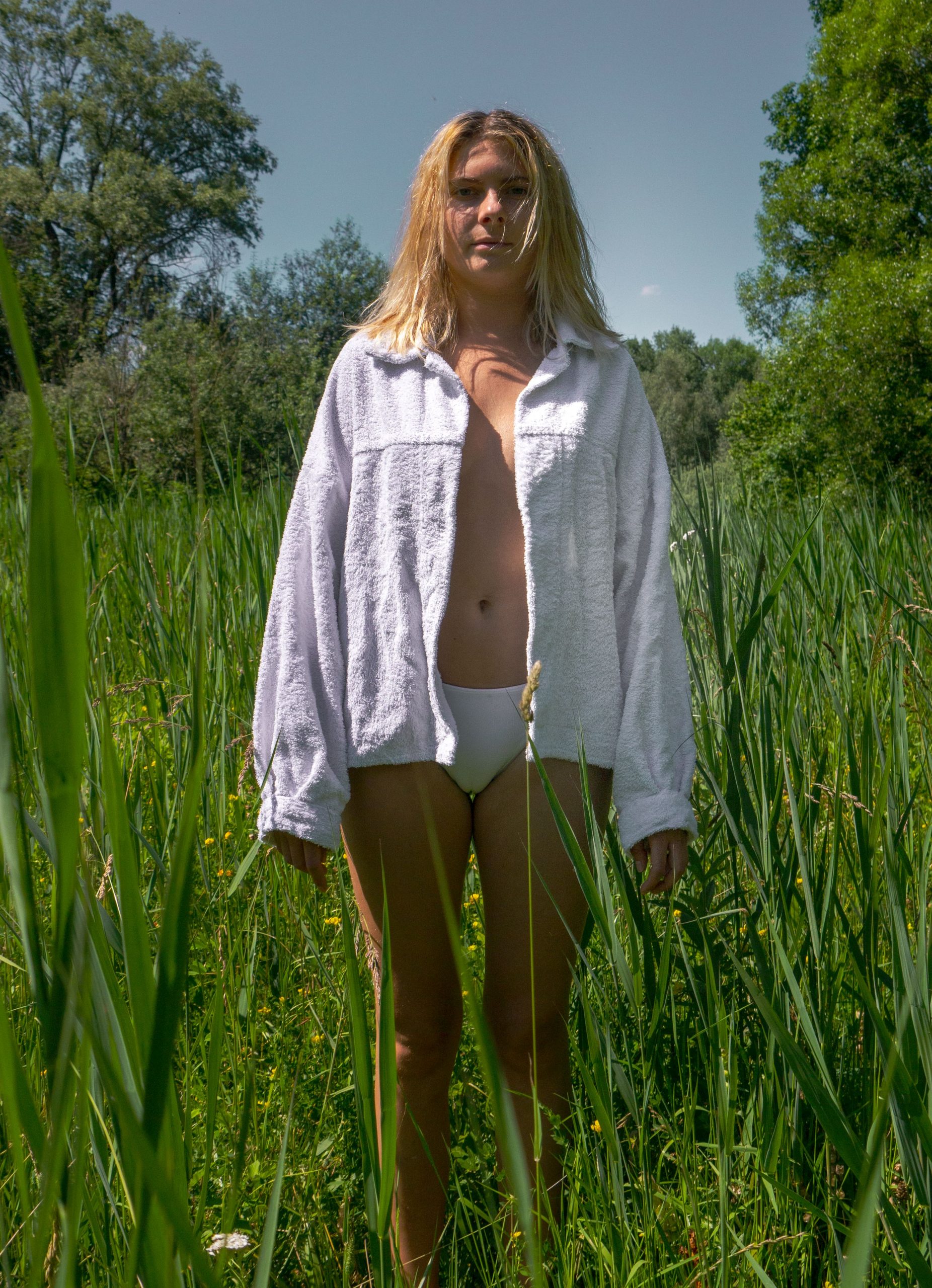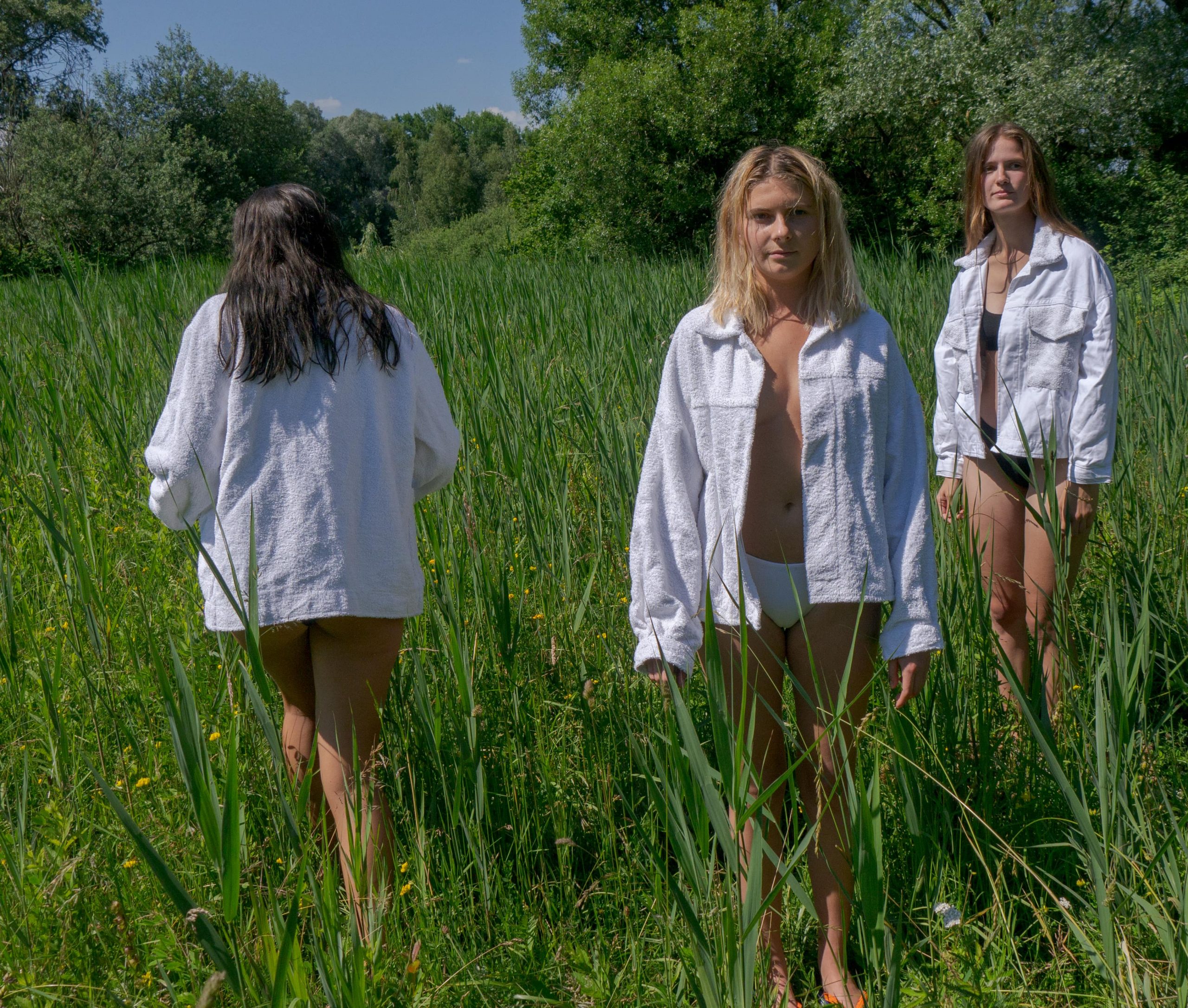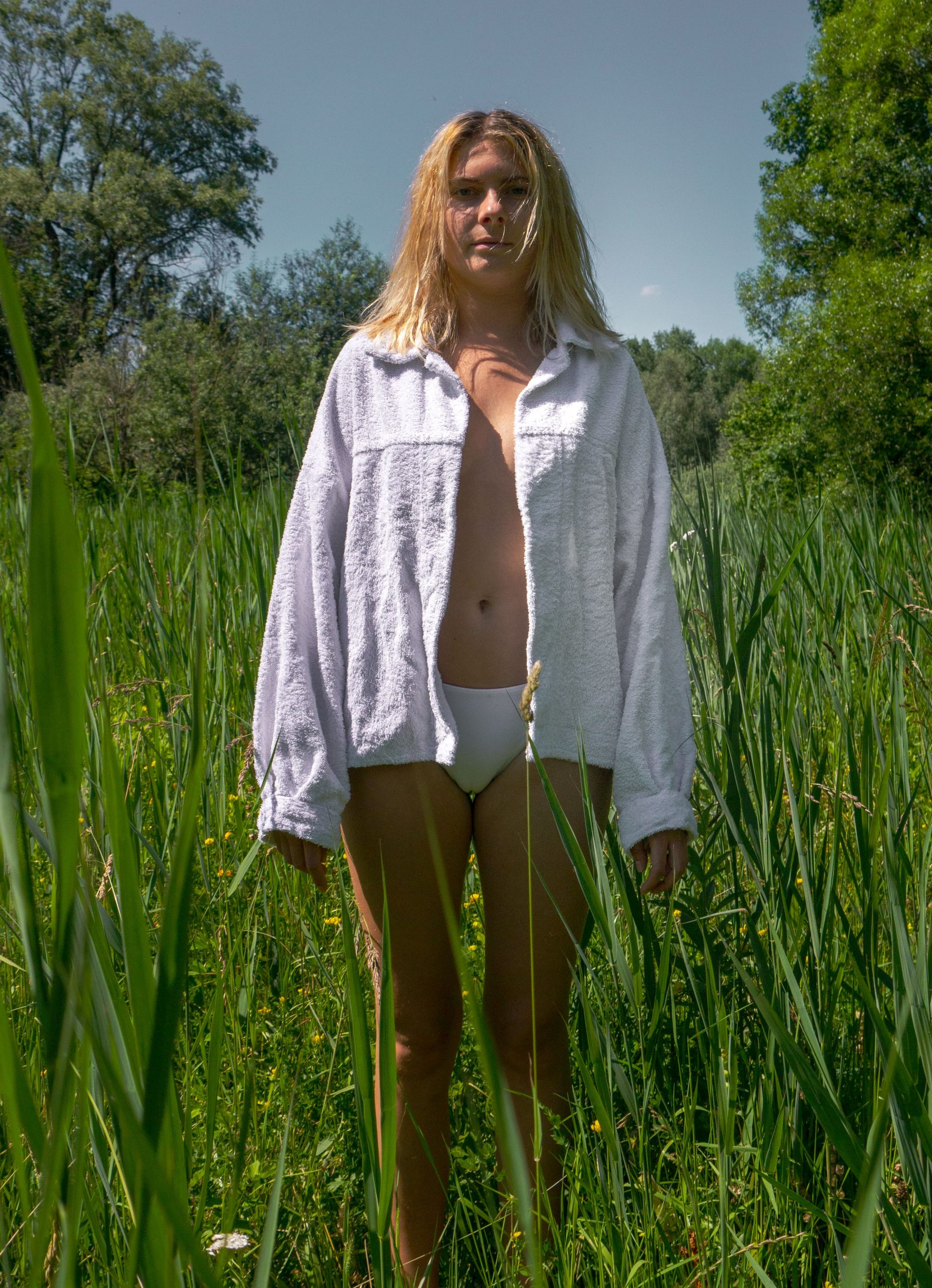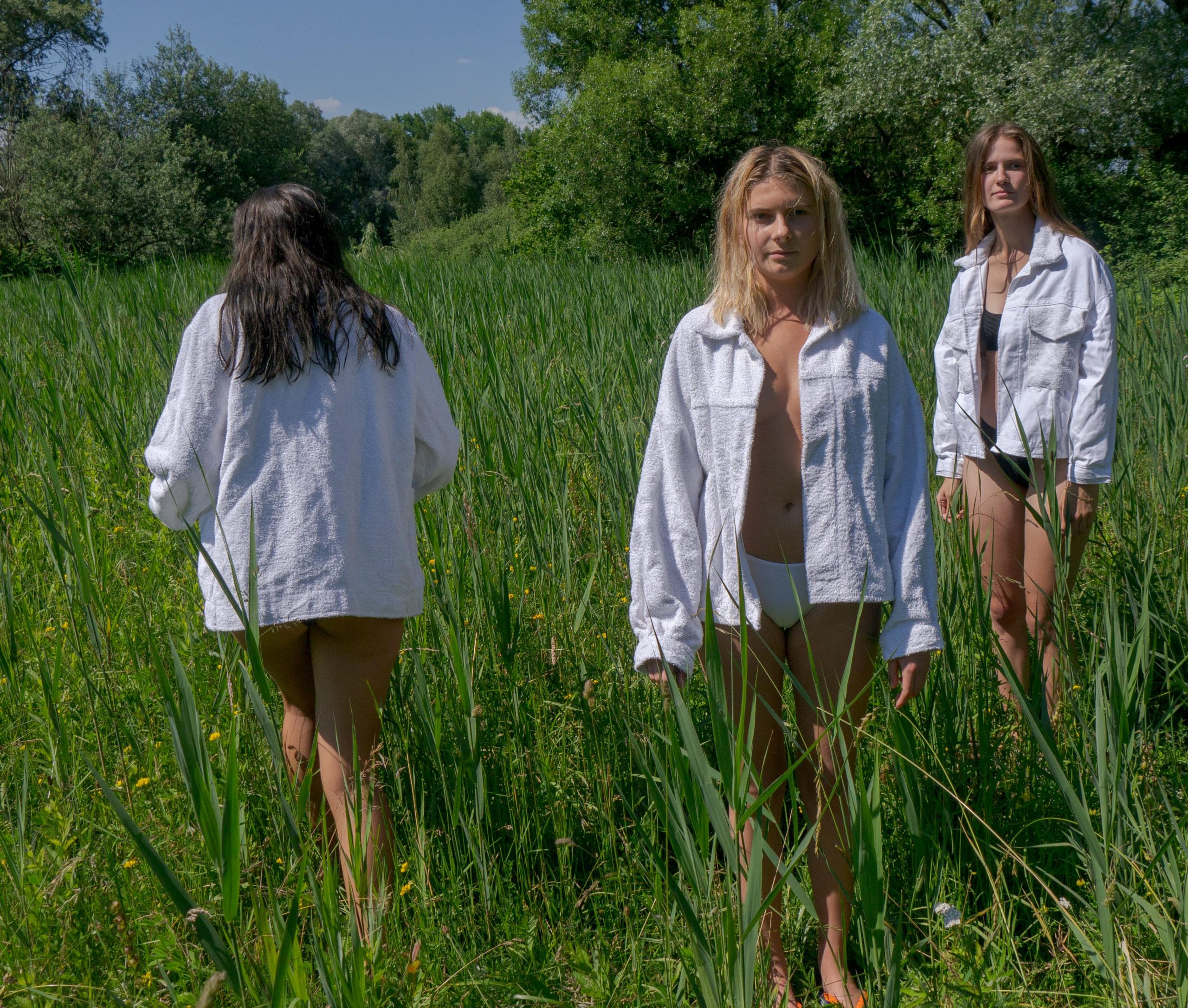SOL - save our lifestyle?

Useful information
- Team members
- Julia Ertl
- Country
- Germany
- Keywords
- circular adaptable responsible upcycling critical essential
Short Description
SOL is a critical consumption project that creates a usage cycle for resources in textile industry.
Detailed Description
Can transformation design extend the life cycle of textile materials and recycle waste products?
In the context of this question, SOL represents a critical consumption project that deals with the topic of textile waste.
Permanent new production and limited usage time of resources lead to an enormous surplus in the textile sector and their moral devaluation.
Have you ever thought about wearing an old bathroom rug as a jacket?
This is the idea behind: using local discarded textiles from the hotel and catering industries, transform them into clothing and extend the cycle of use instead of throwing them away. This way of upcycling creates endless possibilities and allows SOL to be a responsible and adaptable Design approach.
Project Details
- Does your design take social and cultural challenges and human wellbeing into consideration?
We need creativity more than ever, but we definitely need to address what creativity means. And this doesn‘t mean to create more by wasting new resources.
People have been told for so many years that their power is through their wallets and through consuming. And they‘ve tried it and it hasn‘t worked.
Textile production is currently one of the world‘s most polluting industries, producing over 100 billion items of clothing per year and 84 percent of clothing ending up in landfills.
The aim of SOL is to circulate what we already have rather than produce more.
- Does your design support sustainable production, embodying circular or regenerative design practices?
SOL embodies the circular approach by reusing existing materials that would end up on landfills after their usage instead of wasting new resources. The idea implies the creation of usage cycles.
- Does your design use principles of distribution and open source?
SOL only uses local textile waste sources for the transformation process to avoid shipping and transportation of raw materials. Similar and suitable sources can be found all over the world and the making process is individually adoptable.
- Does your design promote awareness of responsible design and consumption?
By demonstrating that for example a rejected bathroom rug can be fashionable when transforming into something different, SOL has the ability to create new value for materials that are seen as waste and highlights the devaluation of resources because of mass production.
Images



Video
Social Media Accounts

Useful information
- Team members
- Julia Ertl
- Country
- Germany
- Keywords
- circular responsible adaptable upcycling critical
Short Description
SOL is a critical consumption project that creates a usage cycle for materials of textile industry.
Detailed Description
Can transformation design extend the life cycle of textile materials and recycle waste products?
In the context of this question, SOL represents a critical consumption project that deals with the topic of textile waste.
Permanent new production and limited usage time of resources lead to an enormous surplus in the textile sector and their moral devaluation.
Have you ever thought about wearing an old bathroom rug as a jacket?
This is the idea behind: using discarded textiles from the hotel and catering industries, transform them into clothing and extend the cycle of use instead of throwing them away. This way of upcycling creates endless possibilities and allows SOL to be a responsible and adaptable Design approach.
Project Details
- Does your design take social and cultural challenges and human wellbeing into consideration?
We need creativity more than ever, but we definitely need to address what creativity means. And this doesn‘t mean to create more stuff wasting new resources.
People have been told for so many years that their power is through their wallets and through consuming. And they‘ve tried it and it hasn‘t worked.
Textile production is currently one of the world‘s most polluting industries, producing over 100 billion items of clothing per year and 84 percent of clothing ending up in landfills.
The aim of SOL is to circulate what we already have rather than produce more.
- Does your design support sustainable production, embodying circular or regenerative design practices?
SOL embodies the circular approach by reusing existing materials that would end up on landfills after their usage instead of wasting new resources. The idea implies the creation of usage cycles.
- Does your design use principles of distribution and open source?
SOL only uses local textile waste sources for the transformation process to avoid shipping and transportation of raw materials. Similar and suitable sources can be found all over the world and the making process is individually adoptable.
- Does your design promote awareness of responsible design and consumption?
By demonstrating that for example a rejected bathroom rug can be fashionable when transforming into something different, SOL has the ability to create new value for materials that are seen as waste and highlights the devaluation of resources because of mass production.
Images


